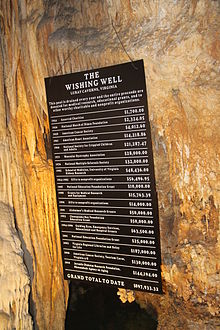Sharing my current photographic projects. Always looking to improve my photographic skills, I look for interesting subjects as I travel across the United States.
Saturday, October 12
Tuesday, October 1
Luray Caverns, originally called Luray Cave, is a cave just west of Luray, Virginia, the United States, which has drawn many visitors since its discovery in 1878. The cavern system is generously adorned with speleothems such as columns, mudflows, stalactites, stalagmites, flowstone, and mirrored pools. The caverns are perhaps best known for the Great Stalacpipe Organ, a lithophone made from solenoid fired strikers that tap stalactites of various sizes to produce tones similar to those of xylophones, tuning forks, or bells.[1]
Visitors enter the cave via a path that curves down through the caverns, eventually reaching Dream Lake, The Saracen's Tent, The Great Stalacpipe Organ, and some large stalactites and stalagmites. The path proceeds to the Wishing Well and a war memorial honoring veterans from Page County. It then ascends to a small passage past the Fried Eggs rock formation and returns to ground level through a smaller passage to the entrance. The entire trek is 1.5 mi (2.4 km) long and can be completed in 45 minutes to 1 hour. Visitors can carry small pets on the cave tour, and leashed pets are permitted on the grounds outside the cave.[2] The caverns now offer step-free access. While this extended pathway will allow for wheelchair access, the caverns aren't advertised as handicap accessible. [3]
Subscribe to:
Posts (Atom)
-
By 1763 the British had about a million and a half colonists on the North American continent. William Johnson, British superintendent of In...
-
My wife and I had the pleasure of a visit from our God Daughter, Allison. She lives with her parents in Houston, Texas. She is a smart and b...










































